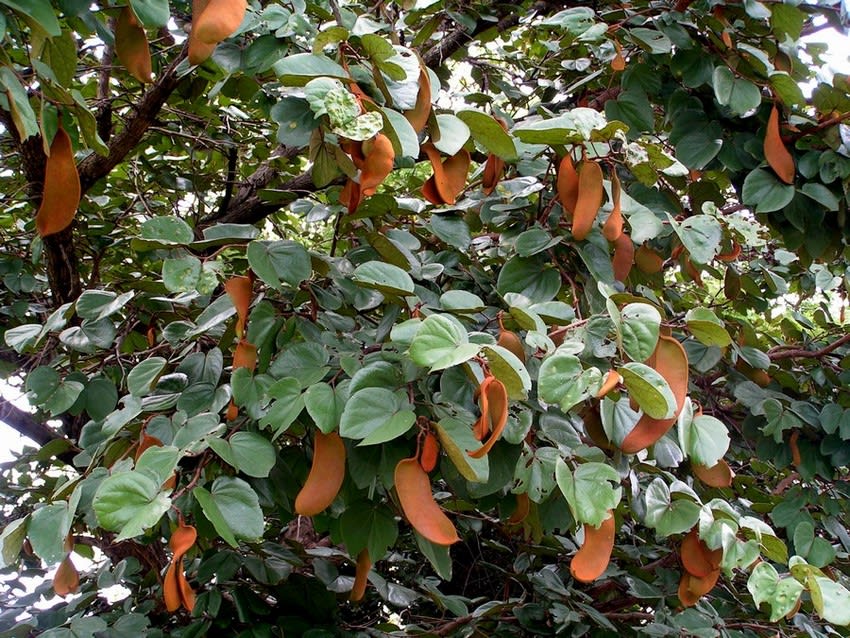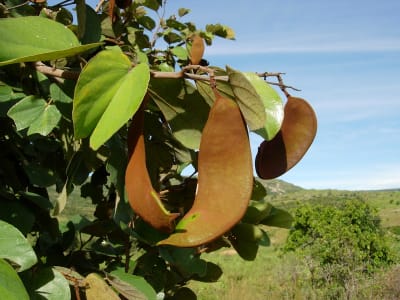Each year during the month of November the Forestry Commission-Zimbabwe selects the tree of the year. The purpose of this exercise is to raise awareness about indigenous trees that is, their role and benefit to the environment, and local communities, and therefore hope to conserve forests in the process. Below is a description about year 2021 tree of the year, Piliostigma thonningii commonly known as the Monkey bread tree, Musekesa in chi Shona or iHabahaba in isiNdebele.
Botanical Name: Piliostigma thonningii
English Name: monkey bread, camel’s foot
Shona : Mutukutu, Musekesa
Ndebele: ihabahaba
Fruits and Seed: P. thonningii fruits are large pods 22×7 cm woody, thick with rusty-brown hairs which wear off as the pods mature. The pods do not split on reaching maturity but fall to the ground where they decay or are broken up from June-September. Seeds are variously shaped (fig )and dispersal occurs when the pods fall and decay. (Jun-Sep).
Habitat and Distribution:
Common in open woodland and wooded grassland, commoner at medium to low altitudes. It grows on any soil type, but heavy clayey soils or medium loamy soils are preferred. Piliostigma thonningii is common in secondary and gallery forests. It is often left in cultivated fields and it rapidly colonises abandoned areas.
Propagation
Natural regeneration, direct sowing, and planting out of seedlings or root suckers can be used for propagation. The number of seeds per kilogram is 7300-8500. Seed collection should be done soon after the fruits turn brown, to prevent insect attacks. Appropriate seed drying is also important, to prevent seed de- cay. The seeds are difficult to extract. This is done by drying the fruits in the sun, cutting them into pieces and separating the seed from the pulp. Seeds can be stored for several years in cool, dry, insect-free conditions. Seeds usually germinate 5-10 days after sowing. Seed pre-treatments such as washing, soaking in water for up to 24 hours, hot water treatment and scarification usually improve germination.
Medicine :P. thonningii is used medicinally in many African countries to treat wounds, ulcers, gastric/heart pain, gingivitis and as an antipyretic. In Tanzania and Zimbabwe, a cough remedy is prepared from the root bark.
SERVICES
Erosion control: This deep rooting species can be employed in soil protection initiatives. Shade or shelter: Provides good shade in homesteads when in full foliage. Reclamation: Fixes nitrogen.
Soil improver: Produces considerable amounts of litter. Use of the leaf litter as mulch enhances soil fertility however P. thonningii leaves decompose slowly.
Ornamental: Its showy white flowers can be aesthetically
enhancing.
Boundary or barrier or support: P. thonningii live
stakes are used in supporting vines and other weaker plants in farms. Poles or posts are obtained from the plant.
Intercropping: A good tree that can be grown with Annona, Grewia and Combretum spp. Competes very little with maize if left in fields and pollarded to reduce shade. Other services: The pods are used as a soap substitute.
The ashes can also be used in soap making.


